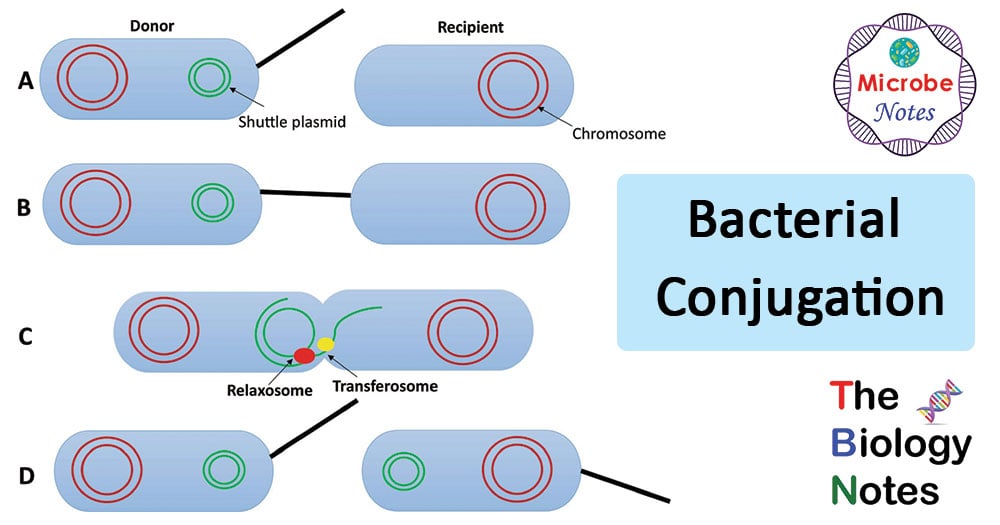Gene transfer in bacteria:
Bacteria do have the ability to take up foreign DNA by various mechanisms and integrate into their own DNA to get new characters. Gene transfer may create resistant to antibiotics.
Gene transfer in bacteria occurs by three mechanisms:
a. Transformation:
In this mechanism, bacteria take up foreign DNA from its environment across the plasma membrane. The foreign DNA combines with original host genetic material to form recombinant DNA with extra features. Eg. Bacillus, staphylococcus, streptococcus. Frederic Griffith’s experiment proved the existence of transformation using Streptococcus pnumoniae.

b. Transduction:
Here the gene transfer in bacteria is bacteriophage (virus that infects bacteria) mediated. During propagation of bacteriophage inside the host cell, some portion of bacterial or chromosomal DNA gets incorporated with propagated phage DNA. When the new formed bacteriophages after replication, infect new bacterial host cell, the phage DNA (with both parent phage DNA and DNA of previous bacterial cell) during its ligation with host cell DNA, forms recombinant DNA with new characters in the new bacterial host cell.

c. Conjugation:
The extra chromosomal DNA material, plasmid (conjugative or fertility plasmid), codes sex pilus in addition to toxins and virulent factors. The sex pilus forms conjugation tube for transfer of gene in between donar cell (with fertility factor/F+ cell) and recipient cell (without fertility factor/F- cell) or between high fertility factor/HFr cell (donar) and recipient cell (f- cell).
